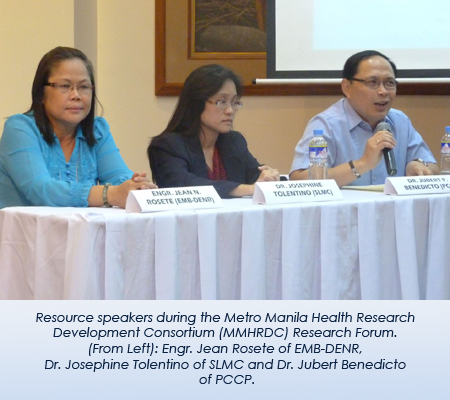- Edmon Agron
- Events
- Hits: 3031
PCHRD holds 1st National Medical Writing and Review Workshop in Cebu City
"No matter how good the research was, if it is unpublished, it is incomplete," said Professor Jose Florencio Lapeña, Jr, Editor-in-Chief of the Philippine Journal of Otolaryngology Head and Neck Surgery and President of the Philippine Association of Medical Journal Editors (PAMJE) during the National Medical Writing and Review Workshop conducted at Marriott Hotel in Cebu City on 19-20 January 2012.
One of the reasons why scientific journal publishing is weak in the country is the quality of articles being submitted for publication. "The quality of articles being written does not meet the editorial standards of medical journals," said Dr. Lapeña. "This is the reason why we want to hold this workshop. We want to help and guide health researchers to write scientific articles for medical journals."
The workshop taught the participants the basics of writing scientific articles, its principles and guidelines, effective presentation of statistical results, tabulations and illustrations. Resource speakers discussed the editorial workflow, peer review processes, the roles and responsibilities of editors and reviewers, plagiarisms and ethical guidelines in scientific writing and reporting.
In his presentation, Professor Lapeña stressed the advantages of writing for medical journals. He said that aside from career, professional and institutional gains, writing for journals will contribute knowledge to medical discipline and provide opportunity for information sharing leading to wider utilization and application of research results.
He added that "doing research is important, but writing what, why and how it was done, is even more important because it serves as permanent documentation of scientific works and preserves the legacy of researchers' accomplishments."
Meanwhile, Dr. Wilfred Peh, Clinical Professor at the National University of Singapore and President of the Singapore Association of Medical Journal Editors (SAMJE) discussed the different structures of scientific papers, authorship and contributorship, and the tools that can help medical journals to effectively and efficiently screen quality articles for publication.
Dr. Peh emphasized the important role of reviewers in the scientific process and publication system. Reviewers who are usually doctors or scientists working in the same area of interest are responsible in safeguarding the quality and credibility of results of the study. "They aid as gatekeepers that will determine whether the manuscript will be published or rejected," said Dr. Peh.
Dr. Cecilia Maramba - Lazarte, Pediatrician and Pharmacology Professor at the University of the Philippines Manila and Editor-in-chief of Pediatric Infectious Diseases Society of the Philippines Journal (PIDSPJ) tackled the criteria of case reports for medical journal publications.
"Publishable patient case report should describe rare, perplexing new diseases, new method of diagnosis, unexpected association between diseases and symptoms, new side effects and complications as well as new strategies or improved treatment that will spawn new research and provide information that strays from classical textbook cases," she said.
The National Medical Writing and Review Workshop was organized by the Philippine Council for Health Research and Development (PCHRD) in collaboration with Philippine Association of Medical Journal Editors (PAMJE) and Asia Pacific Association of Medical Journal Editors (APAME).

